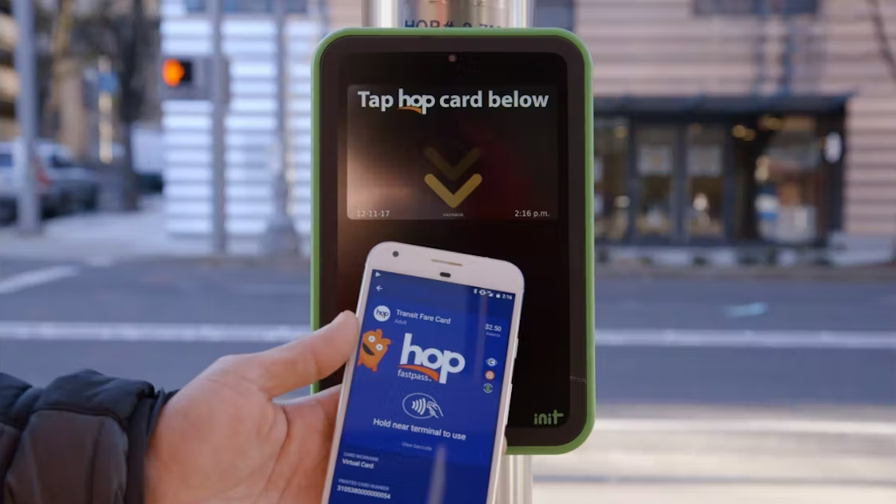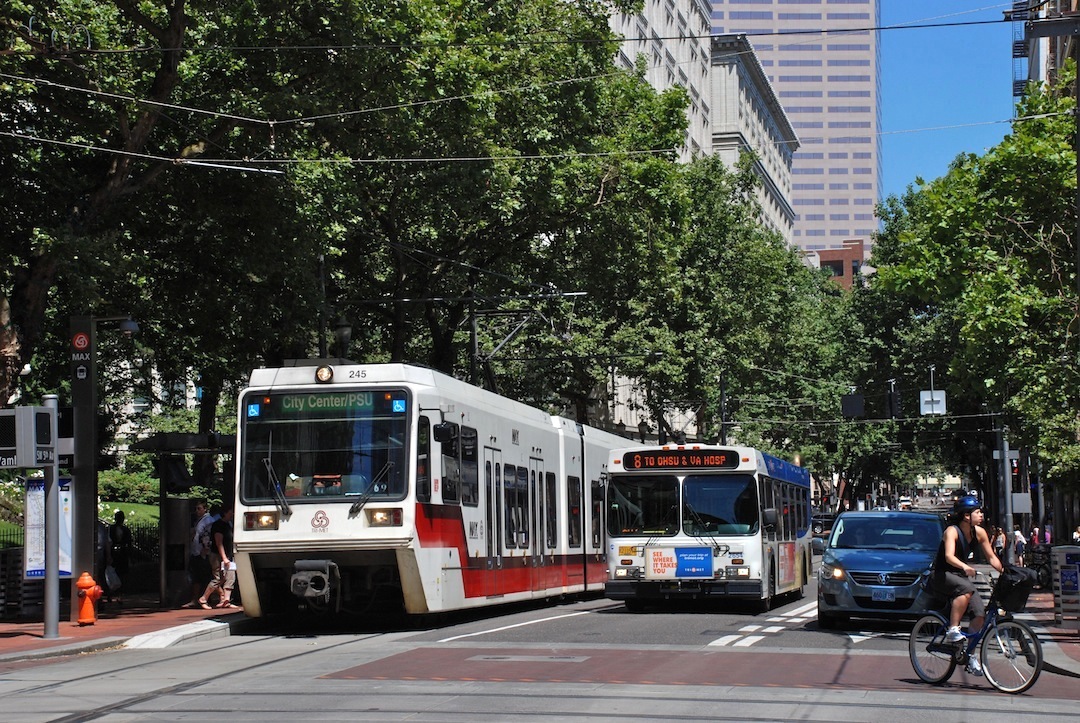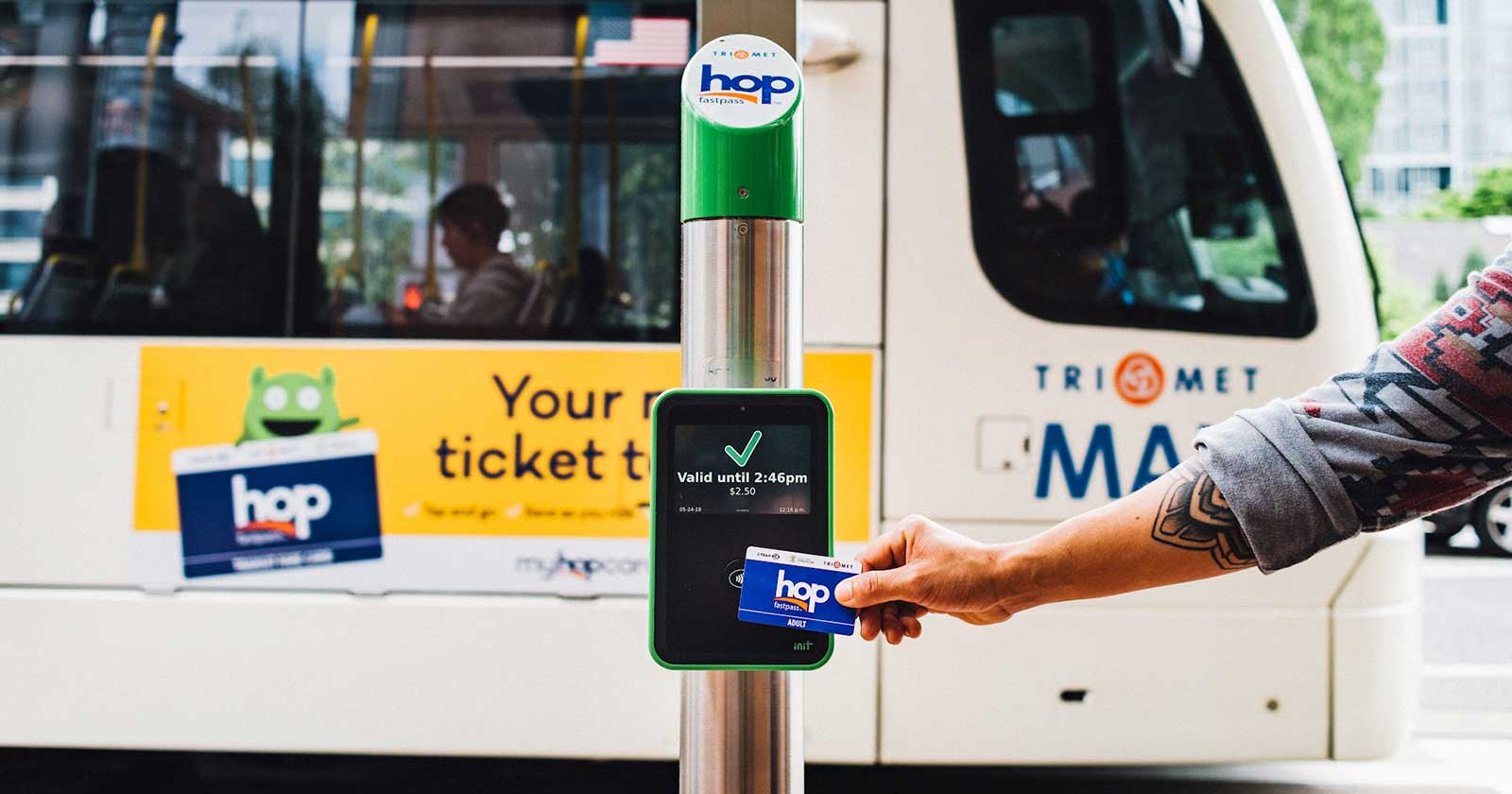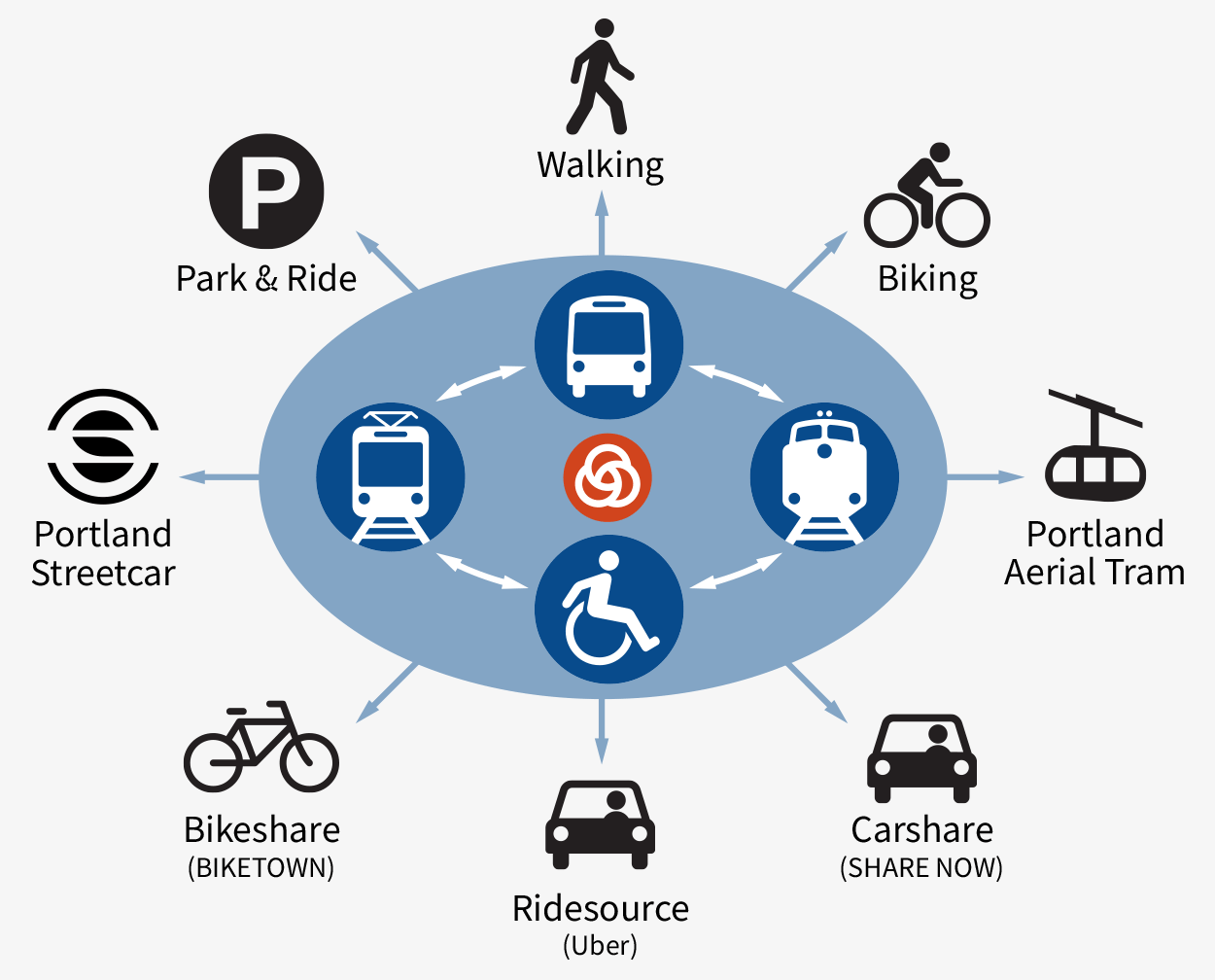
Open Architecture for MaaS in Trimet, North America
Created in 1969, the Tri-County Metropolitan Transportation District of Oregon (TriMet) operates public transit services within the Portland, Oregon metropolitan area. Its boundaries are within the Multnomah, Clackamas, and Washington counties. TriMet serves approximately 1.8 million residents in 533 square miles of the urban portion of the three-county metropolitan area. TriMet operates transit buses, MAX Light Rail, WES Commuter Rail, Portland Streetcar, and the Portland Aerial Tram.
Public transport is a popular choice in the region with an annual ridership of 99 million passengers. This region is the 24th largest metro area in the US, but transit ridership is the 9th per capita. 76% of adults in the region ride TriMet at least once a year.

What was implemented
TriMet has envisioned MaaS as a provision of core transit services to integrate with many other options. In 2010, it initiated a transition from a paper-based fare collection system to an account-based ticketing system to offer customers more choices. It would also include rides in adjacent transit systems as well. TriMet named this account-based ticketing system the Hop Fastpass or Hop.
In contrast to a closed-fare payment system with proprietary software and hardware, TriMet has chosen an open architecture that provides flexibility to integrate modular software and hardware components. Hop’s open architecture allows TriMet to remain flexible on changing technologies or falling costs. This choice makes TriMet more freedom in replacing the incumbent fare payment system over time.
Open architecture means to apply open API, open data, and open standards. It empowers transit agencies to adopt plug-and-play modules for specific technologies. This is a strategy to avoid using a single vendor to provide all software and hardware components. It creates a seamless transit payment experience with multiple vendors providing the website, vending machines, back-end system, and so on.

The current situation
Hop has delivered an account-based, contactless, regional fare collection system with features like open architecture, stored value, open payments, and virtualized smart cards. TriMet uses the open architecture to recruit multiple suppliers for a list of services.
- Init: System Integrator, APIs, back office, and validators
- Moovel: Apps for account management and fare inspection
- Ready Credit: Integrated with the gift card retail networks
- Scheidt & Bachmann: Ticket Vending Machine
- The Bridgade / Marathon: Websites
- Trapeze: Paratransit
- Trimet: Ticket Office Point of Sale
- Apple & Google: Virtual Card
Since its launch in the second half of 2017, Hop is gaining popularity among travel users. By the end of 2018, 20 million trips were paid by Hop. In May 2019, almost 8% of Hop users paid with a virtual card, and over 7% paid with contactless credit or debit cards, while the remaining 85% paid with a physical Hop card.
MaaS Ticketing and Payment Approaches
Hop replaced a zone-based fare system with a flat fare. Hop made it easier to develop new technical solutions for transit payments. Hop offers transit users multiple benefits: fare capping, auto-loading, monthly passes, and concession fares, whether they pay by credit card, smartphone virtual card, or a physical smart card. The smart card option is important for users who prefer to fund fares with cash.
Users of both physical and virtual Hop cards can add value online, by visiting regional transit ticket offices, making a phone call, or via a mobile app. Users of physical Hop cards can also add value at more than 500 stores throughout the Portland region that is part of the Hop retail network.

Business and Financial Models
TriMet issued its RFP for a Hop systems integrator in 2013 to solicit open APIs that would enable any vendor to connect easily to the overall Hop system. APIs are the heart of Hop’s open architecture. They guarantee that a function module can communicate with different technologies. The RFP also established that TriMet would pay no additional fees to the systems integrator for future integrations with new technologies. The open architecture platform and software and hardware components built upon the platform would have been delivered through fixed-price contracts.
Hop’s capacity for plug-and-play positions TriMet to take advantage of falling costs of individual components like POS tablets and fare validators. The open architecture should have allowed TriMet to future-proof its fare payment system. In case that TriMet wants to add new technology or to replace an existing one, it just needs to offer its open APIs to a vendor to integrate it to Hop.
Source: Case study originally published in “Handbook on Ticketing in Mobility as a Service“


